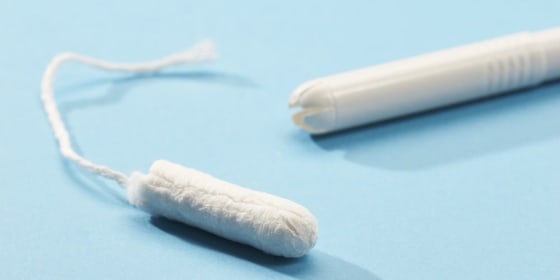A new law in New York is requiring all ingredients in tampons, pads and other menstrual products to be disclosed on the packaging.
Gov. Andrew Cuomo signed the law on Friday, making New York the first state to require such labeling on menstrual products — including pads and tampons — which can potentially contain toxic or allergy-causing chemicals unbeknownst to consumers.
The law will go into effect in 180 days and manufacturers will have 18 months to develop new packaging that discloses all of the ingredients within their products.
Cuomo tweeted the news on Friday after signing the law, writing, "I am proud to sign legislation making New York the first state to require ingredient disclosure, ending an injustice and empowering women to make their own decisions about what goes into their bodies.”
Assembly member Linda B. Rosenthal’s bill to require labeling on menstrual products first passed in June 2018 by the Assembly Committee on Consumer Affairs and Protection. The original bill required disclosure of the percentages of ingredients, including any chemicals or byproducts of chemicals, in feminine hygiene products such as tampons, pads, menstrual cups and period underwear.
Rosenthal shared a celebratory tweet on Friday as well.
“Today my bill was signed into law making NY the FIRST STATE IN THE NATION to require ingredient disclosure on menstrual product packaging,” she wrote. “We have a #righttoknow what’s in tampons & pads. I’m thrilled to lead NYs charge to achieve real #MenstrualEquity #detoxthebox #DayoftheGirl”
Tampons are typically made of cotton, rayon or a blend of materials. The Food and Drug Administration considers them medical devices so ingredients do not have to be listed on the packaging.
The FDA requires tampons to go through a clearance process to prove safety and effectiveness, which includes material safety testing, absorbency testing and microbiological testing.
A study commissioned by the FDA Office of Women's Health to address claims that dioxin, an organic pollutant, could be found in tampons, revealed that one regular tampon would provide less than 0.2% of a woman’s recommended maximum intake of the pollutant for a month and would pose no health risk.
“Sure, dioxins are in the environment, but when a woman uses several tampons throughout the day and somewhere in the neighborhood of 11,000 during her reproductive life, that’s a lot of dioxin exposures,” said Philip Tierno, Jr., clinical professor of microbiology and pathology at NYU School of Medicine.
Another study conducted in 2018 examined 11 different types of tampons as well as four types of menstrual cups and found that the kind of material — whether it was organic, regular cotton, rayon, or a blend — did not make a difference when it came to the growth rate of bacteria that causes Toxic Shock Syndrome.
Health problems like reproductive issues and urinary tract infections can be caused by poor menstrual hygiene. Doctors recommend changing tampons every four to eight hours, washing your hands before using, and choosing the lowest absorbency based on your personal needs.
Cuomo signed legislation in 2018 that required all public schools to provide free menstrual products in restrooms as well as in state and local correctional facilities. In 2016, he also signed legislation to eliminate the sales tax on menstrual products.












